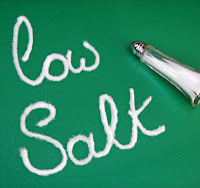Salt affects dough texture, making it stronger and less sticky. Reducing salt can play havoc with the production line, but the Warburtons Dough Stickiness System provides a quick and easy test for stickiness of a standard 0.5kg or 1kg piece of dough. It features a sample testing box into which dough samples can be placed quickly and with minimum exposure of the cut surface to the atmosphere.
The ball of dough can be removed directly from the supply line and tested straight away. A retaining plate is placed on top of the dough, applying slight compression to the sample. A narrow blade is driven through a slot in the retaining plate to a defined distance, giving a compression peak and compression area of the dough, indicators of its consistency (firmness/softness). As the blade is withdrawn upwards, the Exponent software calculates the adhesion peak and adhesion area. The higher the peak, and/or larger the area, the stickier the dough. This testing rig enables a realistic assessment of dough stickiness as it minimises the dough’s exposure to atmospheric variables by testing under controlled conditions.
Next to its role in boosting the flavour of your bread, salt plays a role in tightening the gluten structure and adding strength to your dough. It helps the loaf to hold on to the carbon dioxide gas that is formed during fermentation, supporting good volume. The effect of salt reduction on loaf volume can be measured using the VolScan Profiler. This is a fast, simple and accurate method for measuring bread volume and density, giving a 3D surface scan of a loaf of bread in a matter of seconds, rendering the seed displacement old fashioned and cumbersome, not to mention much less accurate.
However, a recent study published in the Journal of Agriculture and Food Chemistry found that by adjusting the texture of bread, consumers perceive a different level of saltiness due to the interplay between taste, mouthfeel and the speed of sodium release. Reducing the density of bread by increasing pore size was found to give bread a saltier taste, and this can be achieved by using longer proofing times. This effect can also be measured using the VolScan Profiler.
Salt also affects the bread shelf life. Because it attracts water, it can help keep bread from staling too quickly in a dry environment. Bread quickly loses its springiness over time as it becomes staler. The AACC Standard Method 74-09.01 is a very useful measure of bread firmness, and can be carried out using the 36mm radiused cylinder probe along with a TA.XTplus Texture Analyser.
To discuss your specific test requirements click here...
 |  |  |
For more information on how to measure texture, please visit the Texture Analysis Properties section on our website.
 The TA.XTplus texture analyser is part of a family of texture analysis instruments and equipment from Stable Micro Systems. An extensive portfolio of specialist attachments is
available to measure and analyse the textural properties of a huge range of
food products. Our technical experts
can also custom design instrument fixtures according to individual
specifications.
The TA.XTplus texture analyser is part of a family of texture analysis instruments and equipment from Stable Micro Systems. An extensive portfolio of specialist attachments is
available to measure and analyse the textural properties of a huge range of
food products. Our technical experts
can also custom design instrument fixtures according to individual
specifications.No-one understands texture analysis like we do!
To discuss your specific test requirements, click here...
 |  |  |



No comments:
Post a Comment